-
Senior Member
registered user
Okay!
Open a terminal wnidow and type
$ sudo knoppix-installer
and you're off to the races!
I've done this in Knoppix only once myself, mind, and I had already partitioned the drive before I started the process. Still, I have the Knoppix Hacks book at hand, and I'm sure all will go well for you.
- k-i should correctly identify your Windows partitions as NTFS. Don't do anything to drive 1, which Linux calls /hda. It will also be /hda1, since the whole drive is one partition.
- disk 2 will be /hdb, so the partitions will be /hdb1, /hdb2, /hdb3.
- the order of Win-swap-Knoppix doesn't matter to Linux, but Win2K might be happier with FAT32 coming first on the drive.
- don't know whether you'll be asked "where do you want Knoppix, where do you want swap?" or whether you'll be asked "how do you want these partitions formatted?" (or, "what kind of filesystem do you want on these partitions?").
- Linux calls FAT32 "vfat".
- Linux swap partitions are always type "swap," so no choices to make there.
- if offered a choice of filesystems for the Knoppix partition, "ext3" will probably be the default, as well as the best choice. It offers more recovery protection than the former standard, ext2. There are several other types, but some will require cheat codes at boot time or maybe even downloading additional kernel modules - ext3 is universal for all of Linux
- there will be configuration changes to make after installation, but when knoppix-install finishes, you should be able to boot from hard drive and choose Windows or Knoppix. The boot screen's timeout may be very short, and the default is likely to be Knoppix, but it should be essentially functional.
Good luck!
-- Ed
-
Senior Member
registered user
Okay, more thoughts.
- with only three partitions on /hdb, the partitioning part of knoppix-installer may or may not ask whether you want the partitions to be primary, extended, or logical. All three as primary partitions is simplest and quite good for your setup.
- if asked the mount point (what part of Knoppix to install) for your single partition, it's /.
- where to install LILO bootloader - computer's Master Boot Record. If the choices are phrased in Linux terms of drive and partition, it's /hda.
-- Ed
-
Junior Member
registered user
Mr. Ed and Andrew,
Many thanks for your discussion. I wish you'd started your conversation a couple of weeks ago, before I started experimenting with Knoppix-to-HDD. And Ed, I hope that your material will be included in the Knoppix Install Manual or FAQ. Invaluable stuff! It should be required reading for every Linux user, not just Knoppix users.
I've installed to HDD twice now, and will probably have to do it one more time. (I made two mistakes the first time: I allocated *way* too much space to Knoppix and the FAT32 shared partition, and selected "Knoppix" as my installation type instead of Debian.) In my current installation, I haven't allocated enough space to either Debian or the shared FAT32 partition. (After fooling with it some, I suspect that I'll actually be *using* Linux, and not just playing with it. I'll probably want a little more elbow room down the line.)
I'm posting this message primarily to add my two cents about re-sizing NTFS partitions.
My system uses a single 80 GB HDD, with about 35 GB occupied. I looked at XP's defrag graphical analysis before I resized. It looked like I wasn't badly fragged (I'd defragged about a week before my experiment) but the files appeared to be scattered all over the drive.
Since I was fully backed up, I decided to experiment a bit and resize without attempting to move that data dcwn into the lower area of the drive, just to see what would happen.
I booted from the CD, then ran QtParted to resize the NTFS partition from 80 GB (nominal) down to about 50 GB. According to the defrag graphic, that would put the partition well below the upper llimit of the data that existed on the NTFS partition. I expected to see QtParted complain, or, at the least, to find that I'd lost data after I returned to XP. But I - apparently - didn't lose a thing!
I can draw one of two conclusions from my experiment: either the XP defrag graphic doesn't reflect the physical location of files, or QtParted is able to re-locate files as it's resizing an NTFS partition. Or maybe XP running CHKDISK when I rebooted had something to do with it. In any case, I was able to resize without a problem.
Oh, yeah - I also lost a couple of days trying to solve the "missing FAT32 partition" mystery. I found the answer by searching this board. The problem, as you state, is caused by lilo, and the solution is to add the keyword "change" to the XP boot entry in lilo.conf. That keeps lilo from hiding the partition.
Also - I've found that I'm more comfortable using parted from the command line than I am using QtParted from the GUI, but I still think I'll continue using QtParted to resize my NTFS partition. It works.
Thanks again, gentlemen. Great information! I hope that everyone will read it.
Best Regards,
Tom
-
Senior Member
registered user
Heh. Thanks for your kind words, Tom, and for reminding me that There's More Than One Way To Do Things.
I probably couldn't have helped you a couple of weeks ago because I just did the Knoppix install a few days ago. But I've been multibooting long enough that when I got over the surprise of XP not seeing the FAT32 partition, I felt sure knoppix-installer had made the partition hidden. 
So, my way of fixing that was to run fdisk and change the partition's ID from a number that means hidden to the number for the same type, but not hidden. And then remove the partition from lilo.conf since it couldn't be booted anyway.
It's really great to hear you didn't lose anything in your NTFS resizing! I actually ran XP's defragger three times before firing up Partition Magic - I'm kinda paranoid, huh? 
The first time I ran it, the graph showed a couple of things that were left way out away from everything else. Ran it again, same thing. Third time, it brought those sectors back to the main pack. Highly weird. You're right; maybe the graph has issues.
But it's super to know you can use something free-as-in-cheap like QtParted as a solid alternative to Windows-based Partition Magic, which is not only not cheap but annoying in how it does some things.
I wrote this in another thread, where the response was, "Please clarify." 
If you know how to fish, teach others. Then they can feed themselves - and teach even more people - and not come back again and again for more fish.
-- Ed
-
Junior Member
registered user
Ed,
Love the "fishing" saying. Appropos!
You're a brave man, using Partition Magic. I've heard a few horror stories that have scared me away from that tool. It's sort of like a machine gun that works perfectly about 999 out of 1000 times. But every 1000th round or so, it blows up its receiver (and the unfortunate gunner.)
I've always used DOS FDISK or DISKPART. It's done the job. Of course, I never had to resize a live partition before now; my FDISK forays have been on new builds. I was very pleased to see how well QtParted worked. (Now that I think about it, though, I've only used it a few times, and have no idea whether it's bulletproof or the above-mentioned machine gun.)
Anyway, many thanks for your fine efforts. I learned a lot, and am very grateful to you.
Have fun!
Best Regards,
Tom
-
Junior Member
registered user
Ok Ed, you must be getting pretty annoyed with all my questions. Just one last one. How would I make the linux hidden and have windows2000 boot right when i turn the computer on. If this is to complex/complicated/time consuming then would i be able to have lilo open up for a very short time? Thank you, Ill be getting the windows boot cd made up tongiht and possibly install tonight as well
-
Junior Member
registered user
Ahh, once again i seem to be confused. From what i have found online, It seems that my windows 2000 install cd will work to boot? If so I guess I dont have to make a windows 2000 boot cd after all
-
Senior Member
registered user
HI again!
... once again i seem to be confused.
If you aren't confused, you aren't awake. 
... my windows 2000 install cd will work to boot?
Good. In issues of installing and booting WinStuff, it's best to listen to sources as close to Redmond as possible unless someone is waving a huge flag that says, "I KNOW BETTER!" And listen to those people with caution!
Just one last [question].
No, no, save at least one for when you meet the Superuser of us all.  Until then, question, question, question!
Until then, question, question, question!
How would I make the linux hidden....
Let me research the LILO answer to this for another hour or two. I think there's a very crude way in LILO, but maybe I was thinking of GrUB when I said an OS could be hidden at boot time.
Or maybe I was doing the old-person version of thinking, which is looking back with nostalgia on half-memories conveniently rebuilt for the purpose of contentment. 
Back soon!
-- Ed
-
Senior Member
registered user
Ummm ... in case you're wondering just how long an hour or two can take, I'm writing it up now and will post it within ... an hour or two! 
-- Ed
-
Senior Member
registered user
Hello!
I apologize - I had to quit and go to bed last night when I couldn't see straight anymore. I think the computer was tired, too - it was very sluggish in loading knoppix.net. But here you go!
Hiding Knoppix with LILO
Okay, LILO can offer a combination of obscurity and security, although I wouldn't exactly say that it can hide a boot option. A user who knows the right keystrokes can still find an obscured OS and, unless you password-protect it, boot that OS. Still, LILO might do what you want.
But first, a question: does the computer have a floppy drive? If so, you can keep the Windows bootloader in the computer's Master Boot Record - users who boot from hard drive will never see Knoppix.
Install LILO or GrUB on a floppy that only you have access to, and without any of the variations I outline here, you can quite easily have your multiboot system.
Another possibility is to continue to boot Knoppix from CD while setting up some filespace on the hard drive that will persist from boot to boot. Again, Windows users will never see it.
But let's say you want to multiboot from the MBR. Here's the plan:
1. make everyone boot into Windows by default;
2. hide clues to finding Knoppix with install=;
3. make it even harder to find the clues by removing prompt;
4. make it hard to read and act on the clues with a short timeout;
5. still give yourself enough time to act with single-key and alias; and
6. lock out the barbarians, if you wish. 
First, an ...
Intro to LILO
We call LILO a bootloader, but it's better to think of it as a program. It looks like two different things to us because we see it in two different environments.
At boot time it sure looks like a bootloader, offering choices, accepting input, and passing options to the kernel.
Once Linux is booted, running LILO sets up how the computer boots the next time, and by using a persistent configuration file, the times after that.
If you don't run LILO in this session, you can't change how the next session boots because that was set in some previous session. That's why you have to run LILO after changing the config file. GrUB doesn't work this way, but LILO does, so live with it. 
If you're (pardon the pun) terminally curious, LILO accepts some command-line arguments that affect only the next boot and then get thrown away. Just so you know.
/etc/lilo.conf
Like many programs, LILO stores its configuration file in /etc, and also like some, it helpfully flags it with a name that ends in the otherwise unneeded .conf extension. And of course it's a plain-text file that can be edited.
LILO's lilo.conf has two or more sections. First come global settings, then settings for one or more operating systems. To sound quite the geek, call them stanzas.
Also, as is common, there are lines that are ignored, being either blank or starting with #. These latter can be comments or possible options that are switched off for now but can be activated by just deleting the #.
The lilo.conf that Knoppix creates has lots of comments, especially in the global section, and also switched-off options. Good stuff. 
Defaulting to Windows
One global setting you'll have to change is default=. What goes here is the label or alias (we'll come to that) from the stanza of the given OS.
Of course you're free to change any stanza's label to whatever you want. Instead of WinXP/2K(hda1) you can use Windows 2000 - then change the default line to match. (And run LILO when you're done editing.)
Or, if you like, you can give that OS a second name, an alias. In that stanza just add a line that says alias=something - then you can refer to that OS by either name. (And run LILO when you're done editing.)
If the default line is missing or commented out, the default default is whatever OS comes first after the global settings.
Having no clue
LILO-the-bootloader, at boot time, can take on one of three appearances. It can look like a menu with a bitmap, a text-only menu, or a command line. These are chosen with install= in the global settings, and the Knoppix lilo.conf shows all three.
Knoppix uses bitmap (bmp), but you can change that. If there's no install line active, LILO defaults to text menu (menu). To be obscure, use install=text.
In text mode LILO just sits there displaying its version number and boot: and no other clues, waiting for the user to (optionally type something and then) hit <ENTER>. (How long it waits depends on the optional timers - see next section.) If the user just hits <ENTER>, LILO boots the default OS. If something valid is typed, LILO boots that.
But if something invalid is typed, LILO comes back with the valid options. Also, if the user hits <TAB> instead, the valid options are shown.
Now remove the global setting prompt from lilo.conf. This takes boot: off the screen and disables the <TAB> option. So far so good, but if the user hits <ALT>, <CAPS LOCK>, <CTRL>, or <SCROLL LOCK>, the prompt is displayed again and <TAB> is reactivated.
So this can be part of a hiding solution, but not a complete one.
Think fast!
LILO has two timers in the global settings, timeout and delay. The Knoppix lilo.conf includes both, and the documentation is unfortunately brief and unclear, both on the system and in the file, so the difference between them isn't obvious. So what follows is my observation but could be wrong. It wouldn't be the hundredth time!. 
In the documentation, prompt and timeout are described as working together, while delay makes no mention of prompt. I've rebooted so many times lately that I have as much footwear as Imelda Marcos, but I can't consistently make timeout and delay behave differently from each other.
If both are present, the lower time limit seems to prevail. If neither one is there, the user has unlimited time to find the special keys, so making the times short helps to keep users from discovering your secret OS.
Try them out. (And run LILO when you're done editing.)
Alias Mr. X
By the way, the times in timeout and delay are in tenths of seconds. Set them much less than 10 (that is, one second), and you might have trouble getting to the non-defaults yourself.
But who says you have to call the choices Windows and Knoppix? Why not Windows and Don'tBootThisNoMatterWhat? Or Windows and X?
If you make X an alias in the Knoppix stanza, an X will boot it the same as if you had typed the full name, whatever you decided to call it. (So will x - it seems to be case-insensitive - but check it out yourself.)
Unfortunately, if the user hits <TAB>, both the label and alias will be shown. The display won't draw a link between them, but they'll be there.
So, one final trick: single-key. There seems to be a stupid bug in how it's implemented, but the comments in the Knoppix lilo.conf give correctly working examples of single-key + aliases.
If you man lilo.conf you'll read that single-key is supposed to act on the first letter of all labels and aliases. Therefore none of them can have the same first letter. No Knoppix1 and Knoppix2.
If you put single-key in the global area but don't implement aliases, and then run LILO, you'll get an error that there are no single-letter options available to work with single-key. So it sounds like LILO is ignoring the full words.
If you put in aliases of w for Windows and k for Knoppix, and then run lilo, you'll get a collision error - w and Windows start the same, and so do k and Knoppix. So it's paying attention to the full words after all! 
So you can do what Knoppix does and give numeric aliases, or you can use some (non-duplicate and hopefully non-obvious) letter. And run ... well, you know.
What's the word?
Passwords can help if you've done your best to hide Knoppix and want to be extra-sure users can't get to it even when they find it. Also, if you decide the risk of users seeing all the possible boot choices isn't worth all this configuring, but you do want to control what they use.
The password= setting can appear in either the global section, one or more OS stanzas, or all of the above. If it's in global, it applies to all boot images.
But for settings like this one that can be in both places, the value given with the image overrides the global one. That is, a password in the top section sets it for all images, and then an OS that you don't want everyone else to boot into can have your own individual password setting.
But you're starting out with only two operating systems, and you want everyone else to freely log into Windows. So if you decide to set a password, you'll put it on Knoppix.
Note that passwords are not encrypted in /etc/lilo.conf - anyone who can read that file can read the passwords. After you edit the file, there's a command-line option that can reduce the risk, but it's still not even medium-strong security.
Final thoughts (on this topic)
If you've played along all the way, you've made Windows the default, hidden the clues to finding Knoppix, and made it so that other users don't have much time to boot Knoppix but that you do.
I hope you've implemented these one at a time and tried them before moving on. Yes, you too will have a boot collection, but it helps to keep things straight and see how they work individually.
If you mess things up enough so that you can only boot into Windows (or maybe not even that), well, your Knoppix CD can save the day, but it's not exactly pleasant. Trust me. 
LILO has quirks, shortcomings, and even bugs, but it's been around a long time and is evidently still trusted by the Knoppix folks. The version installed is 22.6.1! (LILO was already on my Athlon 2800 before I installed Knoppix because the first Linux to go on it was Slackware, which of course uses LILO.  )
)
If LILO doesn't meet your needs, GrUB is also available in Knoppix. It's newer and more capable, they say. It's version 0.95, at any rate. I have GrUB on another computer but haven't delved into it to this extent.
Finally, LILO requires a "host" Linux to run. If you want to replace Knoppix with another distro, have a plan for transitioning the files and settings to the new Linux (or for replacing LILO with, say, GrUB). If you want to remove all Linux distros and leave only Windows, either LILO or Windows can restore the Win bootloader in the MBR.
Happy multibooting!
-- Ed
 Posting Permissions
Posting Permissions
- You may not post new threads
- You may not post replies
- You may not post attachments
- You may not edit your posts
-
Forum Rules

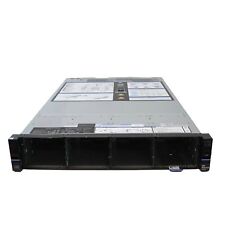
IBM QRadar xx29 Server 4412Q2A
$200.00
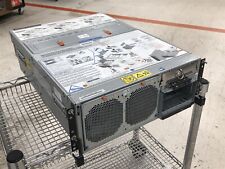
IBM Power 720 POWER7 00E6516 3.6GHz CPU 64GB RAM Server
$209.98
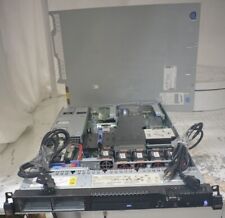
IBM 7944AC1 System x3550 M3 Server 1*Intel Xeon X5650 2.67GHz 4GB SEE NOTES
$27.25
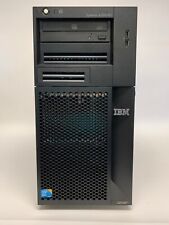
IBM SYSTEM x3200 M2 Server - HDD wiped, No OS
$75.00

IBM Power S822 12-Bay Server System Power8 Core 3.42Ghz DVD-Rom Drive 64GB No HD
$399.99
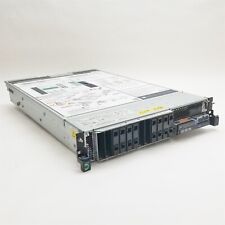
IBM Power S822 8284-22A 12SFF Power8 3.89GHz 6-Core 64GB RAM No Bezel/HDD Server
$359.99
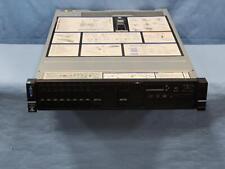
IBM Lenovo X3650 M5 2U 8x 2.5” CTO Rack Server – 2x HS, 2x 750W
$199.00
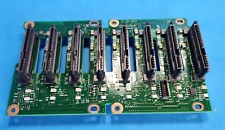
IBM x3650 M4 Server 8-Bay 2.5" SAS/SATA HDD Hard Drive Backplane Board 94Y7751
$11.79
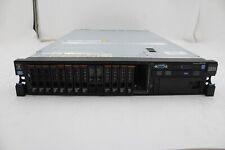
IBM SYSTEM x3650 M4 Xeon E5-2609 2.40GHZ 16GB DDR3-1066MHZ 2x 550W PSU TESTED
$109.95

IBM 8203 E4A p520 Server 8203-E4A 4.2GHz 2-Core POWER6 32GB RAM / NO HDD USED
$109.99



 Reply With Quote
Reply With Quote










